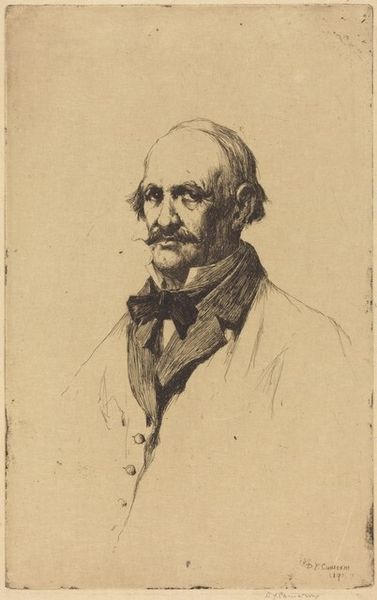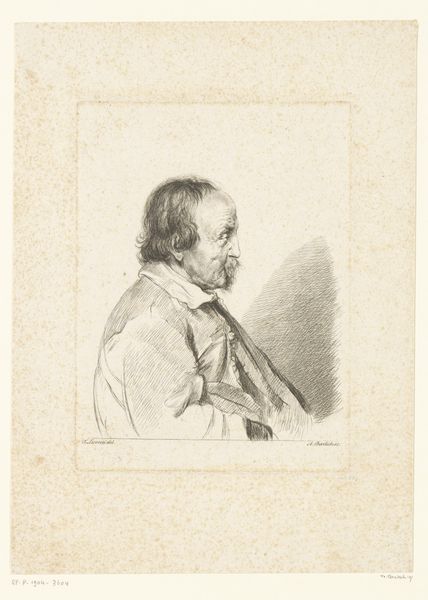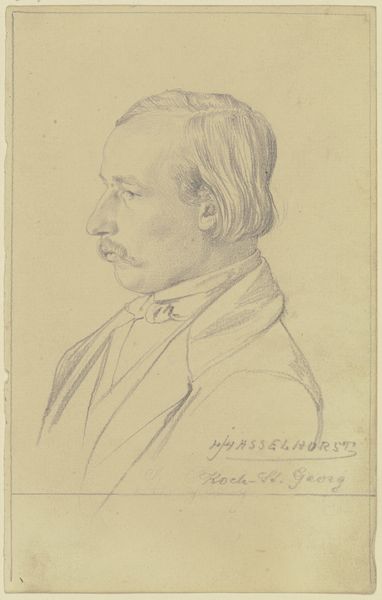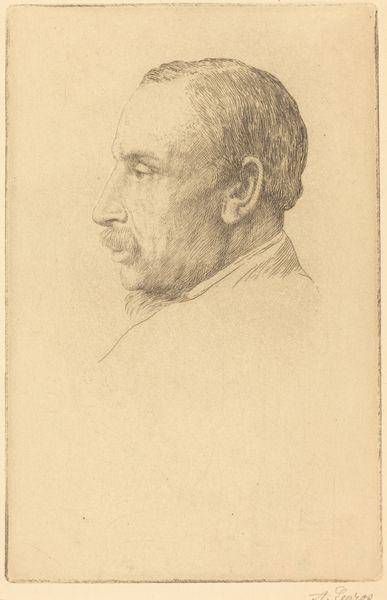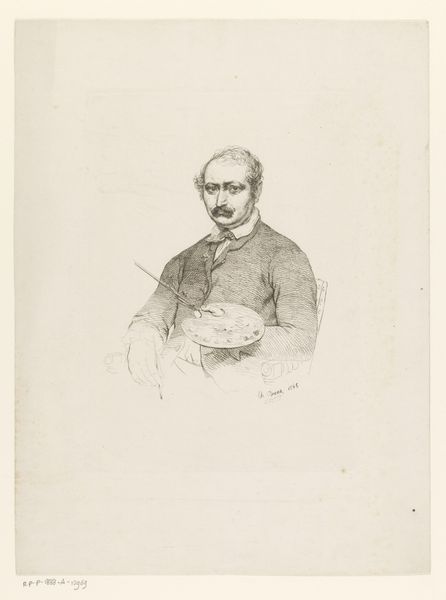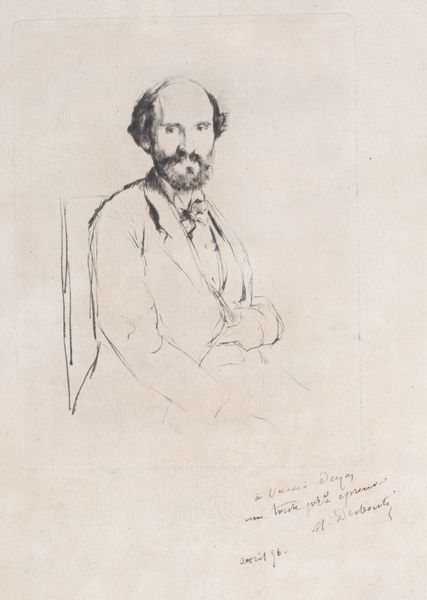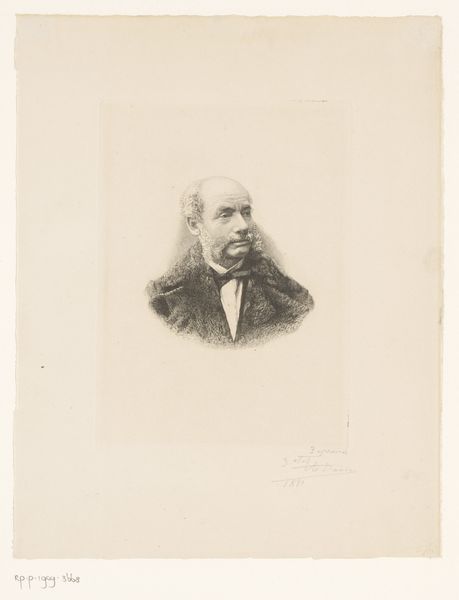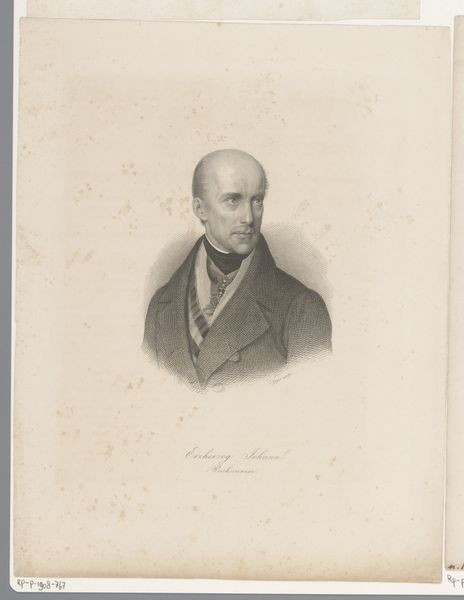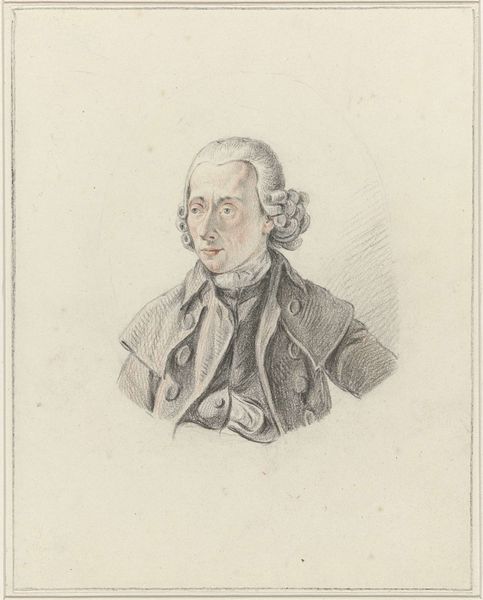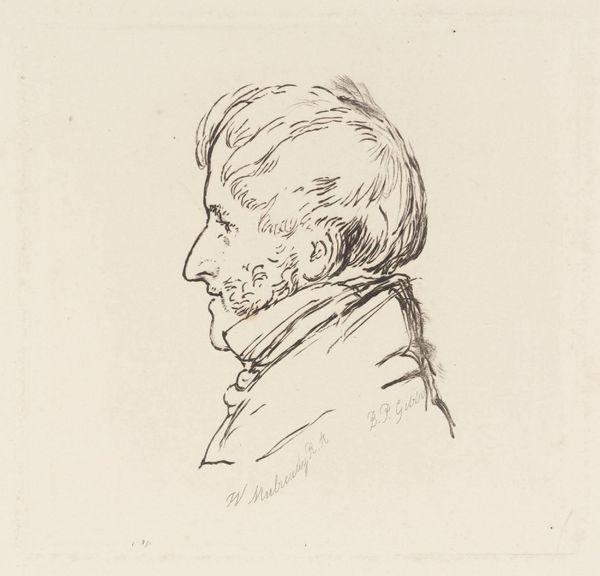
Dimensions: 339 × 259 mm
Copyright: Public Domain
Editor: This is Edgar Degas' "Auguste Degas," a graphite drawing on paper from around 1859. It's strikingly simple, almost unfinished, yet it conveys so much. What do you see in this piece, beyond just a portrait? Curator: I see a work deeply entrenched in the materials and processes of its creation. Consider the accessibility of graphite and paper – these were readily available and relatively inexpensive materials. This choice democratizes the artistic process, doesn't it? What does the medium say about the subject being Edgar's father? Editor: I hadn't thought of it that way, that choosing humble materials could be a social statement, especially given that portraits were often grand oil paintings meant to show wealth! Do you think this was Degas subtly pushing back against the established art world, even early in his career? Curator: It's worth considering. How does the inherent flatness of a graphite drawing challenge traditional notions of depth and illusionism in art? Doesn't it redirect our attention to the surface, the paper itself, the labor of the artist's hand moving across that surface? Editor: It does! I see the marks now, how visible each stroke is. And by choosing to leave the drawing somewhat "unfinished," is Degas emphasizing the process of creation over the final polished product? Curator: Precisely. He lays bare the act of making, the materiality of art itself. Furthermore, how might this work's creation have depended upon networks of material production – from graphite mines to paper mills – and distribution across nineteenth-century France? It reveals the extensive economic infrastructure necessary for artistic creation. Editor: So, by focusing on the materials and the labor involved, we can see the portrait as less about the individual and more about the larger systems that enable art making. Curator: Exactly! This changes the focus from aesthetic representation to social and material contexts. Editor: I see. Thinking about it in terms of materials really opened my eyes to a totally different understanding of the piece. Curator: Absolutely. Analyzing art through a materialist lens allows us a powerful new way of interpretation, far beyond simple aesthetics.
Comments
No comments
Be the first to comment and join the conversation on the ultimate creative platform.
